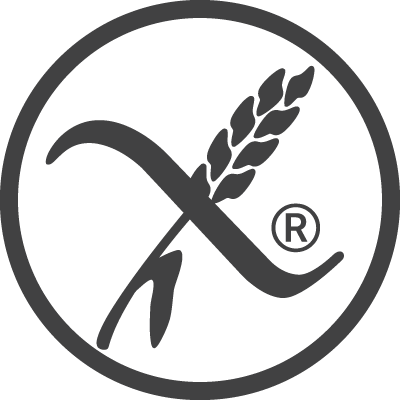Knowledge base - Food allergies

Food allergies
A food allergy is a reaction of the immune system to a particular food or food component. Symptoms can range from mild, such as rash and stomach pain, to severe allergic reactions, such as anaphylaxis. It is important to identify and avoid allergens in order to prevent allergic reactions.
Food allergies are on the rise >>
What causes food allergy? >>
Food allergies in everyday life >>
Food allergies, gluten-free baking and cooking >>
Read product labels carefully >>
Food allergies are on the rise
Food allergies are increasingly common and can pose challenges in everyday cooking, baking and cooking. The Finnish Allergy, Dermatology and Asthma Association estimates that around 2-5% of Finnish adults experience food-related allergic symptoms, while food allergies in children account for 5-8% of Finnish children.
Food allergies in children often improve by school age.
It is important to remember that any symptoms caused by food are not necessarily due to an allergy, but can be caused by conditions such as coeliac disease, irritable bowel syndrome (IBS), gluten sensitivity or lactose intolerance. It is therefore always worth checking with your doctor what the symptoms are and how to treat them properly.
A food allergy is diagnosed by an exposure test carried out by a doctor. If necessary, laboratory tests are also used.
What causes food allergy?
Often, the cause of a food allergy is often the protein in the food or ingredient to which the person is sensitised. The vast majority of food allergies are mild, but the worst case of exposure results in anaphylaxis, a severe generalised allergic reaction for which an adrenaline injection is used as a first aid treatment. In the event of anaphylaxis, the patient should immediately go to the hospital emergency room for further treatment.
In Finland, food allergies in adults and children are usually associated with the following food groups:
- Dairy products: milk, yoghurt, cheese, butter
- Eggs: Whole egg, yolk, protein
- Nuts: almond, walnut, pecan, cashew nut
- Legumes: peanut, soybean, soy sauce, tofu, tempeh
- Wheat: gluten-containing cereals such as wheat flour, bread, pasta
- Fish and shellfish: e.g. salmon, tuna, crab, shrimp, mussels
- Fruit: apple, banana, citrus fruit, kiwi, strawberry
- Vegetables: celery, carrot, tomato, potato
According to the Finnish National Institute for Health and Welfare, food additives can also cause allergies.
Food allergies in everyday life
It is clear that food allergies affect daily life, no matter how mild or severe the allergy. However, in line with dietary recommendations, efforts should be made to ensure adequate and varied dietary intake and to properly substitute foods that are avoided due to allergies. Nutritionists can help to plan a substitute, varied diet.
The national food allergy helpline of the Pirkanmaa Allergy and Asthma Association answers food-related questions. The association's website also provides lots of practical tips and information for people with food allergies.
For travel and dining out, you can take an Allergy Card with you to improve communication, which may be restricted by language barriers, for example.
Food allergies, gluten-free baking and cooking
Gluten-containing cereal products are one group of food allergies. A cereal allergy is an allergic reaction to a particular cereal, while celiac disease is an autoimmune disorder caused by the gluten in cereals. Grain allergy can only be detected by an avoidance-exposure test.
Typical symptoms of a cereal allergy are intestinal, skin or respiratory symptoms, most often caused by foods containing wheat, barley or rye. Some people with food intolerances also have to avoid products containing rice, maize, millet and buckwheat.
According to the Coeliac Society, the most common cereals causing allergy symptoms are wheat, barley and rye. Cross-reactivity between these three cereals is common, but people can also get symptoms from just one particular cereal. The different cereals are often processed in the same production facilities, which means that there is a risk that even non-allergenic cereals can become contaminated, i.e. that small amounts of allergenic cereals are mixed in.
The treatment for a cereal allergy is to avoid the cereals that cause the symptoms. The precision of the avoidance is individual and depends on the severity of the symptoms. If the allergy causes only mild and rapidly passing symptoms, cereal products can be eaten within the limits of the symptoms.
Read product descriptions carefully
Labelling obliges manufacturers to indicate the ingredients contained in the product. The product label will tell you whether the product is gluten-free and otherwise suitable for people with cereal allergies. A gluten-free product may contain gluten from cereals and the potential risk of contamination during cultivation, harvesting, storage or preparation should be taken into account. There is also a risk of contamination during storage or preparation at home.
Gluten-free does not automatically mean that it is suitable for people with a wheat allergy, for example, as it may contain wheat protein. It is therefore important to check the product label to see if the product contains ingredients that may cause allergies to the person consuming it.
All flour, flour mixes and other milled products manufactured by Virtasalmi's Viljatuotte are 100% gluten-free, and no additives or preservatives are used in their production. Some of the products manufactured by Viljatuotte are also suitable for people allergic to maize and rice, for example.
For more information on food allergies, see the following sources we use:
- Allergy, Dermatology and Asthma Association: food allergies
- National Institute for Health and Welfare: Food allergies
- Coeliac Association: poorly understood cereal allergy




